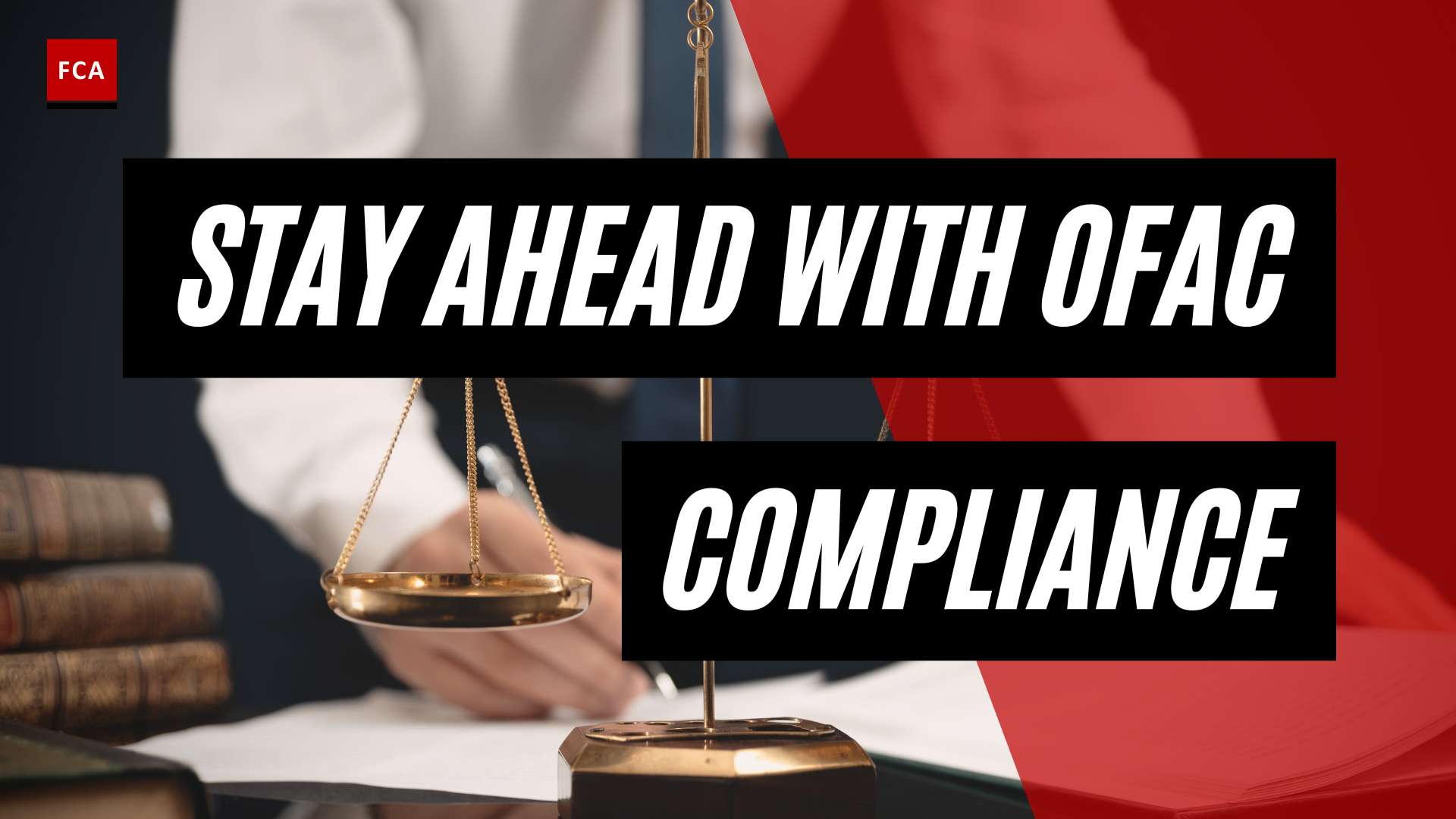Understanding AML Policy Framework
When it comes to combating money laundering and other financial crimes, having a robust AML (anti-money laundering) policy framework is of utmost importance. This framework consists of AML policies and procedures that guide businesses in their efforts to prevent and detect illicit financial activities. Understanding the significance of AML policies and procedures, as well as the consequences of non-compliance, is crucial for organizations operating in industries vulnerable to financial crime.
Importance of AML Policies and Procedures
AML policies and procedures play a vital role in helping businesses comply with regulatory requirements and protect themselves from the risks associated with financial crime. These policies outline the specific measures that organizations must take to prevent money laundering, terrorism financing, and other illicit activities.
Implementing effective AML policies and procedures allows businesses to:
-
Mitigate Risks: AML policies help identify and assess the risks associated with money laundering and financial crime specific to the organization’s industry and operations. By implementing appropriate controls and procedures, businesses can reduce their exposure to these risks.
-
Ensure Compliance: Regulatory frameworks around the world require businesses to have robust AML programs in place. AML policies and procedures ensure that organizations meet these compliance obligations, avoiding legal and financial penalties.
-
Protect Reputation: Implementing strong AML policies and procedures helps businesses maintain their reputation and demonstrate their commitment to ethical conduct. Public trust and confidence are vital for organizations, especially in industries where financial integrity is paramount.
-
Detect Suspicious Activities: AML policies and procedures provide a framework for detecting and reporting suspicious activities. By establishing effective transaction monitoring mechanisms, businesses can identify potential money laundering or terrorist financing activities and promptly report them to the appropriate authorities.
Consequences of Non-Compliance
Non-compliance with AML regulations can have severe consequences for businesses and individuals. Inadequate AML policies and procedures can lead to:
-
Financial Penalties: Regulatory bodies have the authority to impose substantial fines on businesses that fail to comply with AML regulations. These fines can range from thousands to millions of dollars, depending on the severity of the non-compliance.
-
Reputational Damage: Non-compliance with AML regulations can result in significant reputational damage for businesses. Negative publicity, loss of customer trust, and the erosion of brand value are common consequences of non-compliance.
-
Legal Consequences: Non-compliance can lead to criminal charges against the organization or its employees, potentially resulting in imprisonment. Additionally, regulatory bodies may revoke licenses or certifications, effectively shutting down the business.
-
Undermining Global Security Efforts: Money laundering and terrorism financing pose significant threats to global security. Non-compliance undermines international efforts to combat these crimes, jeopardizing the integrity and stability of the financial system.
To avoid these consequences, organizations must prioritize the development and implementation of robust AML policies and procedures. Regular review and updates to these policies are essential to ensure ongoing compliance as regulations and best practices evolve.
By embracing the importance of AML policies and procedures and understanding the potential consequences of non-compliance, businesses can safeguard themselves against financial crime, protect their reputation, and contribute to global security efforts.
Key Components of an AML Compliance Program
To establish an effective anti-money laundering (AML) compliance program, financial institutions must incorporate key components that address the integrity of the financial system and safeguard against illicit activities. By implementing a robust framework that encompasses these components, institutions can enhance their AML compliance program and mitigate the risk of financial crimes.
Risk-Based Approach
A risk-based approach is the foundation of an effective AML compliance program. This approach involves financial institutions assessing the risk profile of each customer to determine the level of due diligence required (Investopedia). By understanding the risk associated with different customers, institutions can allocate resources more efficiently and focus their efforts on higher-risk individuals and entities.
Customer Due Diligence
Customer due diligence (CDD) is a critical component of AML compliance. It involves conducting thorough checks to verify the identity of customers and assess their potential risk for money laundering or terrorist financing activities. CDD procedures may include obtaining identification documents, conducting background checks, and understanding the nature of the customer’s business or financial activities.
Transaction Monitoring
Transaction monitoring plays a crucial role in detecting and preventing suspicious activities. Financial institutions should implement robust systems and procedures to monitor customer transactions for any unusual or potentially illicit behavior. Automated transaction monitoring systems can help identify patterns, trends, and red flags that may indicate potential money laundering or other financial crimes.
Suspicious Activity Reporting
When suspicious activities are identified through transaction monitoring or other means, financial institutions are required to file suspicious activity reports (SARs) with the appropriate regulatory authorities. SARs provide a mechanism for reporting and sharing information on potentially suspicious transactions, enabling law enforcement agencies to take necessary actions and investigate potential financial crimes.
Employee Training and Awareness
AML compliance programs should include comprehensive training for employees. Training programs should educate employees about AML regulations, red flags of suspicious activities, and the institution’s internal policies and procedures. By promoting a culture of awareness and compliance, employees become the first line of defense against money laundering and other financial crimes.
Regular Review and Updates
An effective AML compliance program requires continuous evaluation, review, and updates. Financial institutions should regularly assess the effectiveness of their AML policies and procedures, taking into account emerging risks and regulatory changes. Regular audits and evaluations help identify areas for improvement and ensure that the program remains up to date with evolving AML regulations.
By incorporating these key components into their AML compliance programs, financial institutions can establish a strong defense against illicit activities and demonstrate their commitment to safeguarding the integrity of the financial system. Implementing a risk-based approach, conducting thorough customer due diligence, monitoring transactions, reporting suspicious activities, training employees, and regularly reviewing and updating the program are essential for effective AML compliance. For more information on AML policies and procedures, refer to our AML policy template and AML policy requirements articles.
Implementing an Effective AML Policy
To combat money laundering and protect the integrity of the financial system, financial institutions must implement an effective Anti-Money Laundering (AML) policy. This section will explore the key components involved in implementing an AML policy, including designing a risk-based approach, customer due diligence procedures, transaction monitoring and reporting, training and education for employees, and ongoing review and updates.
Designing a Risk-Based Approach
A sound AML policy begins with designing a risk-based approach. This involves assessing the risks associated with different customer types, products, and geographic locations. By understanding the specific risks faced by the institution, a tailored approach to Know Your Customer (KYC) procedures can be developed. This enables institutions to allocate resources effectively and focus on higher-risk areas (Cube Global).
Customer Due Diligence Procedures
Customer due diligence (CDD) is a critical component of an effective AML policy. It involves verifying the identity of customers, understanding the nature of their business relationships, and assessing the potential risk of money laundering. Robust CDD procedures should be implemented to ensure that customers are properly identified and that any suspicious activity is promptly detected. This includes conducting ongoing monitoring of customer accounts and transactions to identify any unusual or suspicious patterns (Cube Global).
Transaction Monitoring and Reporting
Transaction monitoring is another essential aspect of an AML policy. Financial institutions should implement systems and processes to monitor customer transactions in real-time. This enables the identification of suspicious activities, such as large cash transactions, structuring, or high-frequency transfers. Any suspicious transactions should be reported to the appropriate regulatory authorities in accordance with local regulations (Cube Global).
Training and Education for Employees
A well-trained and educated workforce is crucial for the effective implementation of an AML policy. Institutions should provide comprehensive training programs that educate employees on AML principles, regulatory requirements, and the identification of suspicious activities. Ongoing training and regular updates are essential to keep employees informed about emerging risks and changes in regulations. This ensures that the institution’s AML program remains effective and up to date (Financial Crime Academy).
Ongoing Review and Updates
An AML policy should be a living document that evolves with the changing landscape of financial crime and regulatory requirements. Regular reviews and updates must be conducted to address emerging risks, new typologies, and changes in regulations. By regularly reviewing and enhancing the AML program, institutions can ensure that it remains effective in detecting and deterring money laundering activities (Financial Crime Academy).
By implementing these key components, financial institutions can establish a robust AML policy that safeguards against financial crimes, protects their reputation, mitigates legal and reputational risks, and contributes to global security. It is essential for institutions to stay informed about the latest developments in AML regulations and regulatory requirements to ensure ongoing compliance and effectiveness of their AML programs.
The Role of AML Regulations and Regulatory Bodies
To effectively combat money laundering and other financial crimes, robust AML (Anti-Money Laundering) regulations and the oversight of regulatory bodies play a vital role. In this section, we will explore some key regulations and regulatory bodies involved in shaping AML policies and procedures.
USA PATRIOT Act and Bank Secrecy Act
In the United States, two significant pieces of legislation have had a substantial impact on AML policies and procedures. The USA PATRIOT Act (Uniting and Strengthening America by Providing Appropriate Tools Required to Intercept and Obstruct Terrorism Act), passed in 2001, made significant changes to AML policies. It imposed stricter penalties for non-compliance and enhanced due diligence requirements for financial institutions.
The Bank Secrecy Act (BSA) of 1970 was the first legislation in the United States specifically addressing money laundering. The BSA requires financial institutions to assist government agencies in detecting and preventing money laundering activities. It established reporting requirements, such as the filing of Currency Transaction Reports (CTRs) and Suspicious Activity Reports (SARs), which are crucial tools in identifying and reporting potentially illicit transactions.
Financial Action Task Force (FATF)
The Financial Action Task Force (FATF), founded in 1989, is an international organization that sets global standards for combating money laundering and terrorism financing. Its recommendations are widely adopted by countries and financial institutions worldwide to strengthen AML policies and procedures.
The FATF regularly reviews and updates its recommendations to address emerging threats and ensure the effectiveness of AML measures. The organization conducts mutual evaluations of member countries’ AML systems and issues public statements identifying jurisdictions with strategic deficiencies in their AML regimes. These evaluations and statements contribute to the global efforts to combat money laundering and terrorist financing.
Regulatory Enforcement and Penalties
AML compliance is crucial in the financial sector, and regulatory bodies closely scrutinize financial institutions to ensure they have robust AML programs in place. Non-compliance with AML regulations can result in substantial penalties, impacting both the financial institution and individuals within the organization.
Regulators globally have increasingly focused on enforcing AML regulations, leading to significant fines for non-compliance. For example, a well-known bank faced a $1.5 billion fine for AML program deficiencies. These penalties serve as a deterrent and reinforce the importance of implementing effective AML policies and procedures.
Financial institutions must stay updated on the evolving AML regulatory landscape and ensure their compliance with the applicable regulations. By adhering to AML regulations and cooperating with regulatory bodies, financial institutions contribute to the global efforts in combating financial crimes and maintaining the integrity of the financial system.
In the next section, we will explore the importance of AML compliance for financial institutions, highlighting the benefits it brings in safeguarding against financial crimes and protecting reputation and trust.
Importance of AML Compliance for Financial Institutions
Financial institutions play a crucial role in safeguarding against financial crimes by implementing robust Anti-Money Laundering (AML) compliance programs. AML compliance is not just a regulatory requirement; it is essential for several reasons, including safeguarding against financial crimes, protecting reputation and building trust, mitigating legal and reputational risks, and contributing to global security.
Safeguarding Against Financial Crimes
AML compliance is vital for financial institutions to protect themselves and the financial system from illicit activities. Money laundering, terrorist financing, and other financial crimes pose significant threats to the integrity and stability of the global financial system. By adhering to AML regulations and implementing effective compliance programs, financial institutions can detect and prevent these illicit activities, ensuring a secure environment for themselves and their customers.
Protecting Reputation and Building Trust
Maintaining a strong reputation is crucial for financial institutions. Non-compliance with AML regulations can result in substantial reputational damage, eroding trust among customers, investors, and the public. News of AML program deficiencies and penalties can spread quickly, tarnishing the institution’s image. By prioritizing AML compliance, financial institutions demonstrate their commitment to ethical practices, transparency, and the fight against financial crimes, enhancing their reputation and building trust with stakeholders.
Mitigating Legal and Reputational Risks
Non-compliance with AML regulations can have severe legal and financial consequences for financial institutions. Regulatory bodies closely scrutinize institutions to ensure compliance with AML requirements. Failure to implement robust AML programs can result in substantial penalties, as demonstrated by the $1.5 billion fine imposed on a well-known bank for AML program deficiencies (Financial Crime Academy). Additionally, there can be criminal liability for individuals within the organization. By prioritizing AML compliance, financial institutions mitigate legal and reputational risks, safeguarding themselves from potential penalties and legal consequences.
Contributing to Global Security
AML compliance is not just about individual financial institutions; it contributes to global security efforts. Money laundering and terrorist financing have far-reaching implications, funding criminal activities, terrorism, and destabilizing economies. AML regulations and compliance programs are essential components of the global fight against these threats. By implementing effective AML compliance programs, financial institutions actively contribute to maintaining global security and stability.
In conclusion, AML compliance is of paramount importance for financial institutions. By safeguarding against financial crimes, protecting reputation and building trust, mitigating legal and reputational risks, and contributing to global security, financial institutions play a critical role in maintaining the integrity and stability of the financial system. By adhering to AML regulations and implementing robust compliance programs, financial institutions can demonstrate their commitment to ethical practices, protect themselves from potential penalties, and contribute to a safer financial environment.
Leveraging Technology for AML Compliance
In the modern era, technology plays a pivotal role in facilitating effective anti-money laundering (AML) compliance. Financial institutions can leverage various tools and software solutions to enhance their AML programs, making them more robust and efficient. This section explores the importance of anti-money laundering compliance software, the benefits of technology in AML programs, enhancing control processes, and identifying and monitoring high-risk individuals and organizations.
Anti-Money Laundering Compliance Software
Utilizing dedicated anti-money laundering compliance software is essential for financial institutions aiming to strengthen their AML programs. These software solutions offer advanced features and automation capabilities that enable organizations to handle vast amounts of data and streamline AML processes.
By implementing anti-money laundering compliance software, financial institutions can effectively monitor customer transactions, identify suspicious activities, and generate accurate reports for regulatory authorities. These tools often incorporate sophisticated algorithms and machine learning techniques to detect patterns and anomalies in financial transactions, improving the efficiency of transaction monitoring and reducing false positives.
Benefits of Technology in AML Programs
The integration of technology in AML programs brings numerous benefits to financial institutions, enhancing their ability to combat money laundering and terrorist financing. Some notable advantages include:
-
Efficiency: Technology streamlines AML processes, enabling institutions to handle a large volume of transactions with greater speed and accuracy. Automated workflows and data analysis tools reduce manual efforts, allowing compliance teams to focus on investigating high-risk activities.
-
Risk Mitigation: Anti-money laundering compliance software helps financial institutions identify and assess risks associated with customers, transactions, and counterparties. By leveraging technology, organizations can implement a risk-based approach, allocate resources effectively, and prioritize their efforts in mitigating potential risks.
-
Enhanced Control Processes: Technology provides financial institutions with comprehensive tools to implement and enforce control processes, ensuring adherence to AML policies and procedures. Through automated identity verification, watchlist screening, and transaction monitoring, institutions can effectively identify and prevent illicit activities.
Identifying and Monitoring High-Risk Individuals and Organizations
Technology enables financial institutions to identify and monitor high-risk individuals and organizations more effectively. Anti-money laundering compliance software often integrates with databases and watchlists containing information about politically exposed persons (PEPs), sanctioned entities, and other high-risk profiles. By cross-referencing customer data against these lists, institutions can flag potential risks and take appropriate measures to mitigate them.
Furthermore, technology facilitates ongoing monitoring of customer transactions and behavior. By analyzing transactional patterns and detecting deviations from normal activity, institutions can identify suspicious behavior and promptly report it as required by regulatory guidelines.
To ensure compliance with AML regulations, it is essential for financial institutions to leverage technology and anti-money laundering compliance software. By doing so, they can enhance control processes, identify high-risk individuals and organizations, and streamline their AML programs. This not only helps safeguard against financial crimes but also contributes to the overall integrity of the financial system.









